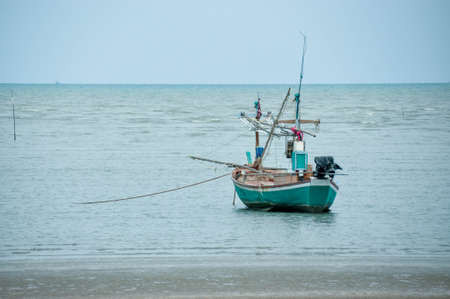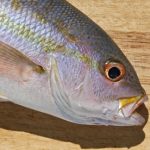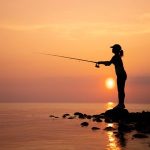1. Falling for the One-Size-Fits-All Rod
If you’re just getting into fishing, it’s easy to think that one fishing rod can do it all. Walk into a big-box store and you’ll find combo kits labeled “all-purpose” or “universal.” Sounds great, right? But here’s the truth: using a generic rod is one of the fastest ways to ruin your fishing experience.
Why One-Size-Fits-All Rods Don’t Work
Fishing rods aren’t one-size-fits-all because fish aren’t one-size-fits-all. Different species require different techniques, and that means different gear. A rod that works for bass in a freshwater lake won’t be ideal for surf fishing on the coast or going after trout in a mountain stream.
Common Issues with Generic Rods:
- Lack of sensitivity: You might not feel light bites from smaller fish like crappie or trout.
- Poor casting accuracy: All-purpose rods often struggle with precision, especially when finesse is needed.
- Inadequate power: Fighting a big catfish or saltwater redfish? A generic rod could snap under pressure.
How to Pick the Right Rod Based on Species and Style
The best way to choose a rod is by thinking about two things: what kind of fish you want to catch, and where/how you plan to fish. Here’s a quick guide to help you get started:
| Fishing Style | Target Species | Recommended Rod Type |
|---|---|---|
| Bass Fishing (Freshwater) | Largemouth, Smallmouth Bass | Medium power, fast action, 66″–7 baitcasting or spinning rod |
| Trout Fishing (Streams & Rivers) | Rainbow, Brown Trout | Ultralight to light power, fast action, 56″–6 spinning rod |
| Surf Fishing (Saltwater Shoreline) | Striped Bass, Redfish | Medium-heavy power, moderate action, 9–12 surf spinning rod |
| Panfish (Lakes & Ponds) | Crapppie, Bluegill | Ultralight power, slow action, 5–6 spinning rod |
| Cats & Carp (Stillwater) | Catfish, Carp | Medium-heavy power, moderate-fast action, 7–8 spinning or baitcasting rod |
Avoiding the Rookie Mistake
The bottom line? Dont fall into the trap of buying one “do-it-all” rod and expecting great results. Take some time to learn about the fish you want to catch and match your gear accordingly. Youll have more fun on the water—and catch more fish too.
2. Overlooking the Right Reel Combo
One of the biggest mistakes beginner anglers make is grabbing any rod and reel combo off the shelf without checking if they actually match. Using the wrong combination can lead to poor casting, line tangles, or even broken gear. Whether youre spinning, baitcasting, or fly fishing, pairing the right rod with the right reel is key to having a smooth and enjoyable time on the water.
Why Matching Your Rod and Reel Matters
A mismatched setup affects everything from how far you can cast to how well you can fight a fish. For example, using a heavy baitcasting reel on an ultralight spinning rod will throw off your balance and performance. It’s like putting truck tires on a bicycle – it just doesn’t work right.
How to Choose the Right Combo
Here are some general guidelines for matching rods and reels based on your style of fishing:
| Fishing Style | Rod Type | Reel Type | Best For |
|---|---|---|---|
| Spinning | Spinning Rod | Spinning Reel | Beginners, light tackle, finesse fishing |
| Baitcasting | Baitcasting Rod | Baitcasting Reel | Larger lures, heavier lines, precision casting |
| Fly Fishing | Fly Rod | Fly Reel | Targeting trout, salmon, and other species with flies |
Tip: Check Power and Action Ratings
Your rod should have power (light, medium, heavy) and action (fast, moderate, slow) ratings that match what your reel is built for. For instance, a medium-power spinning rod pairs well with a size 2500-3000 spinning reel for bass fishing.
Tip: Stay Within Line Weight Ranges
The rod usually lists recommended line weights. Make sure your reel is loaded with line that falls within this range for best results.
Quick Checklist Before You Buy:
- Rod and reel type match? Spinning with spinning, baitcasting with baitcasting, etc.
- Line weight compatible? Keep it within the rod’s suggested range.
- Lure weight appropriate? This helps with casting accuracy.
- Comfortable feel? Hold the combo in-store if possible – it should feel balanced in your hand.
Selecting the right rod and reel combo might seem confusing at first, but once you understand the basics, youll avoid frustrating days on the water and start landing more fish.
![]()
3. Buying Line Like It Doesn’t Matter
One of the most common mistakes beginners make is thinking that fishing line is just an afterthought. But here’s the truth—using the wrong line can mean the difference between landing your catch or going home empty-handed. Whether it’s the weight, material, or visibility of the line, every detail plays a role in how successful your day on the water will be.
Why Line Type and Weight Matter
If youre using a line thats too light, it might snap when you hook a strong fish. On the flip side, a line that’s too heavy can spook fish in clear water or reduce casting distance. And let’s not forget about abrasion—rocks, logs, and even a fish’s teeth can wear down the wrong kind of line fast.
Common Line Types and When to Use Them
Here’s a quick breakdown of the three main types of fishing lines and where they shine:
| Line Type | Best For | Pros | Cons |
|---|---|---|---|
| Monofilament | Beginners, freshwater lakes, topwater fishing | Cheap, easy to handle, stretches to absorb shocks | Can degrade in sunlight, less sensitive |
| Braided Line | Heavy cover, long casts, deep water fishing | Super strong, thin diameter, no stretch (great sensitivity) | Visible in clear water, can damage rod guides if not used properly |
| Fluorocarbon | Clear water, finesse techniques, leader material | Nearly invisible underwater, sinks fast, good abrasion resistance | Stiffness can cause knots to slip if not tied correctly |
Picking the Right Line for Water Conditions & Fish Behavior
The environment youre fishing in should directly influence your line choice. Heres how to match your setup:
| Condition/Fish Behavior | Recommended Line Type/Weight | Why It Works |
|---|---|---|
| Clear Water with Spooky Fish (like trout) | Fluorocarbon 4-8 lb test | Low visibility helps avoid spooking fish; lighter weight suits smaller species |
| Muddy Water or Heavy Cover (bass fishing) | Braided Line 30-65 lb test | Tough enough to pull fish through weeds and structure; high strength-to-diameter ratio is key here |
| General Freshwater Fishing (panfish, small bass) | Monofilament 6-10 lb test | User-friendly for beginners; versatile enough for many conditions and species |
| Saltwater Inshore (redfish, snook) | Braided mainline with fluorocarbon leader (20-30 lb) | Braid gives casting power and sensitivity; fluoro leader resists abrasion from saltwater structures and sharp gill plates |
Avoid This Rookie Mistake:
A lot of new anglers grab whatever line is cheapest or already spooled on their reel. Don’t do that. Take five minutes to think about what kind of fish you’re targeting and where you’ll be fishing. The right line sets up everything else in your rig—and trust us, it matters more than you think.
The bottom line? Treat your fishing line like it’s as important as your rod or lure. Because when it comes down to that moment when a fish hits—your line is all that connects you.
4. Using the Flashiest Lures for Everything
One of the most common mistakes beginner anglers make is assuming that the flashier the lure, the more fish it will catch. Bright colors, shiny finishes, and wild designs might look cool on the store shelf, but they dont always work in real fishing conditions. In fact, using flashy lures in the wrong situation can actually scare fish away or fail to attract them at all.
Why Flashy Isn’t Always Better
Fish rely heavily on sight and instinct when choosing what to eat. Most species are used to feeding on specific types of prey in their environment—things like minnows, crawfish, insects, or worms. These natural food sources usually have duller, more muted colors and subtle movements. When you throw a neon pink lure with glitter into a clear lake where fish are feeding on small brown shad, chances are they’ll swim right past it.
Matching the Hatch
The concept of “matching the hatch” comes from fly fishing but applies to all types of angling. It means choosing bait or lures that closely resemble what fish are naturally eating at that time and place. This makes your presentation seem more realistic and increases your chances of getting a bite.
Here’s a quick guide to help you match your lure to local forage:
| Water Type | Common Forage | Recommended Lure Type | Lure Color |
|---|---|---|---|
| Clear Lakes | Shad, Bluegill | Soft plastics, crankbaits | Natural (silver, green pumpkin) |
| Muddy Rivers | Crawfish, Worms | Jigs, spinnerbaits | Darker (black, red) |
| Ponds | Frogs, Insects | Topwater frogs, poppers | Green, brown |
| Saltwater Bays | Shrimp, Mullet | Spoons, soft plastics | White, chartreuse |
When Can Flashy Lures Work?
This doesn’t mean flashy lures never have their place. They can be effective in stained water where visibility is low or during aggressive feeding times when fish are striking out of reaction rather than hunger. Some species like pike or bass may also respond well to bright colors in certain conditions. But as a beginner, its safer to start with realistic-looking baits that mimic the natural diet of your target fish.
The Bottom Line for New Anglers
If youre just starting out, resist the temptation to buy the craziest-looking lures you find at the tackle shop. Instead, take time to learn what your local fish are eating and choose lures that match in size, color, and movement. You’ll catch more fish—and save money on gear you don’t need.
5. Ignoring Local Conditions and Advice
One of the biggest mistakes new anglers make is assuming that fishing gear works the same way everywhere. But just like you wouldn’t wear snow boots to the beach, you shouldn’t pick your tackle without thinking about where you’re actually fishing. Local conditions—like water type, weather, and fish species—play a huge role in what gear will work best.
Why Local Knowledge Matters
Fishing success often comes down to understanding the specifics of your location. Are you casting into a weedy freshwater lake or deep-sea fishing off the coast? Are the local bass biting on soft plastics or topwater lures this season? Locals know these answers because they’ve been out there and figured it out through trial and error.
Common Pitfalls When You Ignore Local Advice
| Mistake | What Happens | Better Approach |
|---|---|---|
| Using freshwater gear in saltwater | Your reel corrodes quickly, and your line may snap under pressure | Ask a local bait shop what saltwater-rated gear holds up best in your area |
| Bringing lures that don’t match local baitfish | Fish ignore your presentation completely | Talk to nearby anglers about what the fish are feeding on right now |
| Fishing at the wrong time of day or tide | You go home empty-handed | Check tide charts and ask locals when the bite is hot |
How to Tap Into Local Wisdom
- Visit a local bait and tackle shop: These spots are goldmines for real-time info. The folks behind the counter usually fish those waters themselves.
- Join local Facebook groups or forums: Many communities have active online groups where anglers share tips, photos, and current conditions.
- Chat with people on the water: Most fishermen love to talk shop. A friendly question at the dock can lead to valuable insights.
- Hire a guide (even for one trip): It’s an upfront cost, but learning from someone who knows the area can save you hours—or even days—of frustration.
The bottom line? Don’t go it alone. Fishing might be a solo sport sometimes, but your success often depends on being part of the community—even if it’s just asking one good question at the right time.


